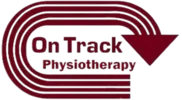Patellar tendon issues are quiet common among the athletic and active adult populations.
Here are some tell tale signs that you are dealing with a patellar tendon issue:
- Focal Inferior Patellar Pole Pain
- The pain is very localized and sharp
- The task you participate in requires a lot of repetitive running, jumping, or stopping. You may have been performing these tasks for a long period of time (weeks/months) or you performed these tasks much more frequently than you usually do in a short period of time.
Patellar Tendinitis or Tendinosis can affect both adolescents and adults, and the onset tends to vary between presentations.
A major differential diagnosis we want to also be considering is patellar femoral pain syndrome (PFPS). This is a different subset of knee pain that usually presents as a diffuse ache about the knee cap and feels deeper or undernieth the patella. Both patellar femoral pain syndrome and patellar tendinitis have moderately different treatment strategies.
For patellar femoral pain syndrome (PFPS) we need to focus our attention on more of the biomechanics of the knee to help reduce the pain levels. Then optimize a loading strategy to the joint and muscles to improve capacity and functional capabilities.
For Patellar Tendinitis we need to first control the amount of load the knee joint and tendon is undergoing. Which may require activity modification for the time being. Optimizing both resistance and dynamic loads to the knee to minimal-moderate pain levels is the first step in managing this injury and decreasing pain.
The second step includes finding the optimal loading strategy to return the knee back to previous levels of capacity. During this process, you also want to be sure and check that no biomechanical factors may be contributing to tendon overloading. But if the issue is 100% a tendon problem, changing biomechanics will have a much lower impact decreasing pain than with a person who displays patellar femoral pain (PFPS).
Below is a video demonstrating two exercises that I like to utilize for patellar tendon progressive loading. In general, one will move from an isometric exercise to a isotonic exercise that has progressive loading principals applied to it.
Please realize that these two exercises are not “cure” all treatment solution and many times you will need extra work done to completely abolish the pain and regain complete confidence in your knee!
These two exercises are a great place to start and trial. But to get yourself the best shot at getting back to the activities you enjoy without nagging pain, we offer a free discovery session to provide you clarity on how we can do this for you!


